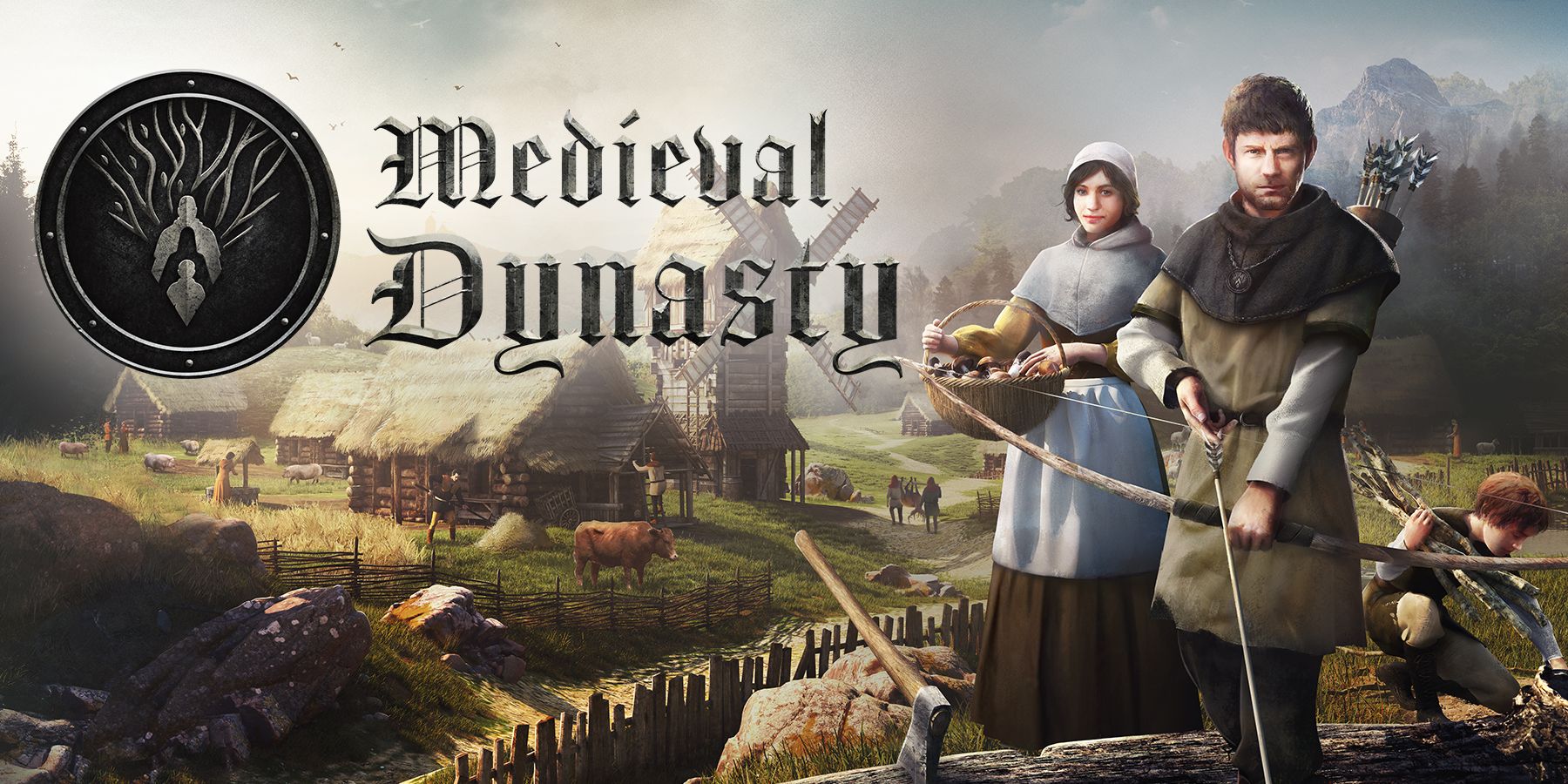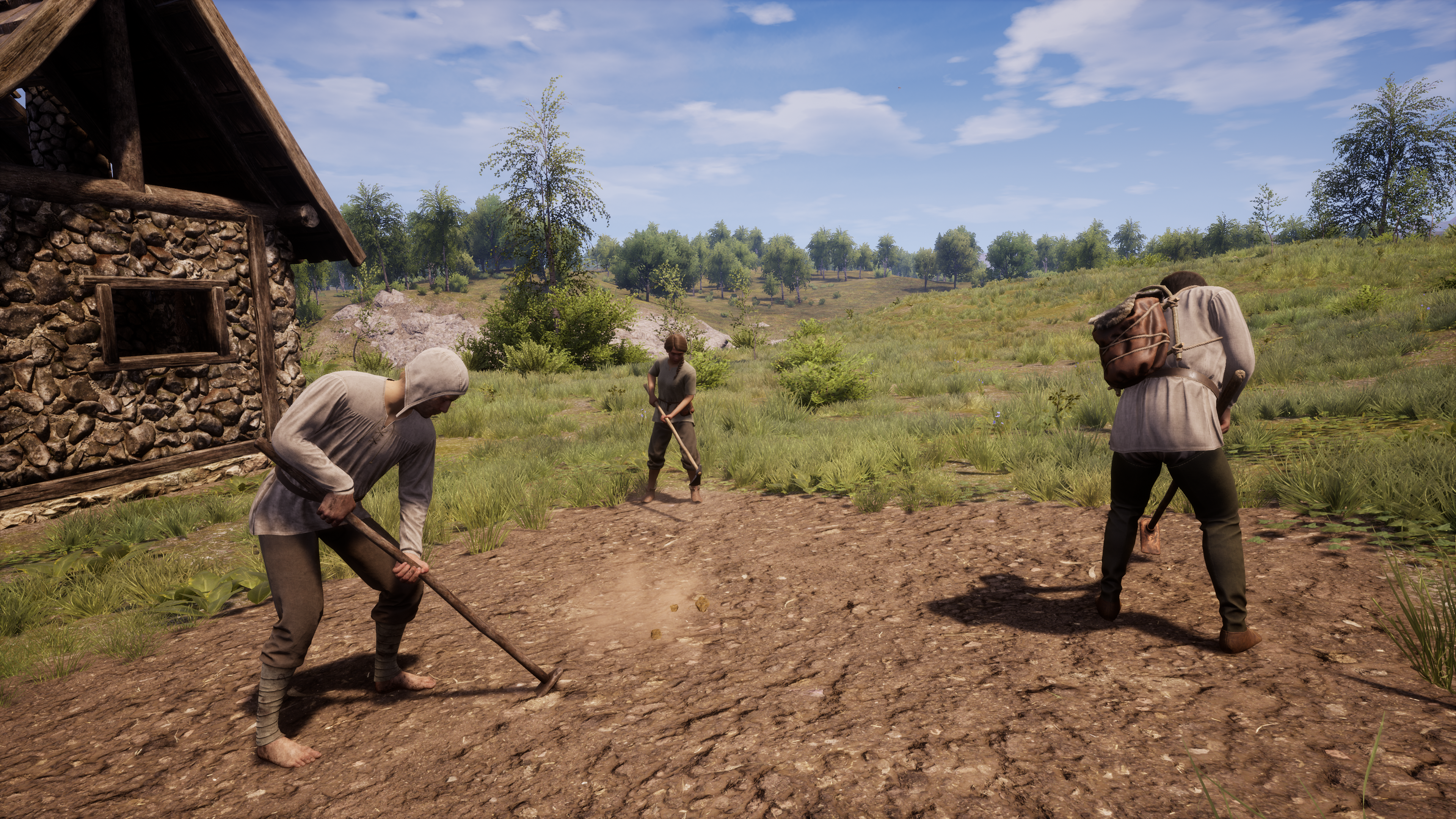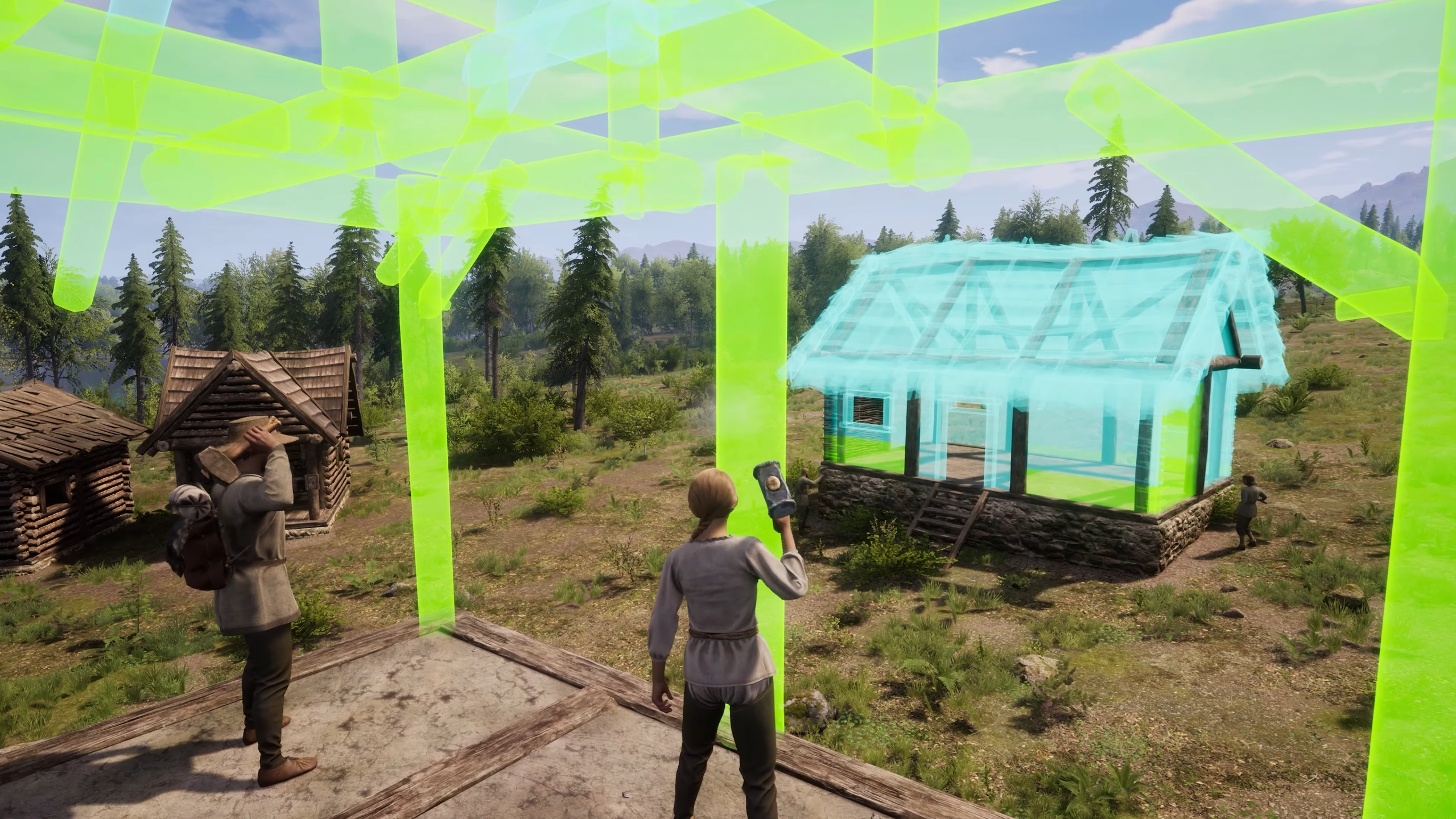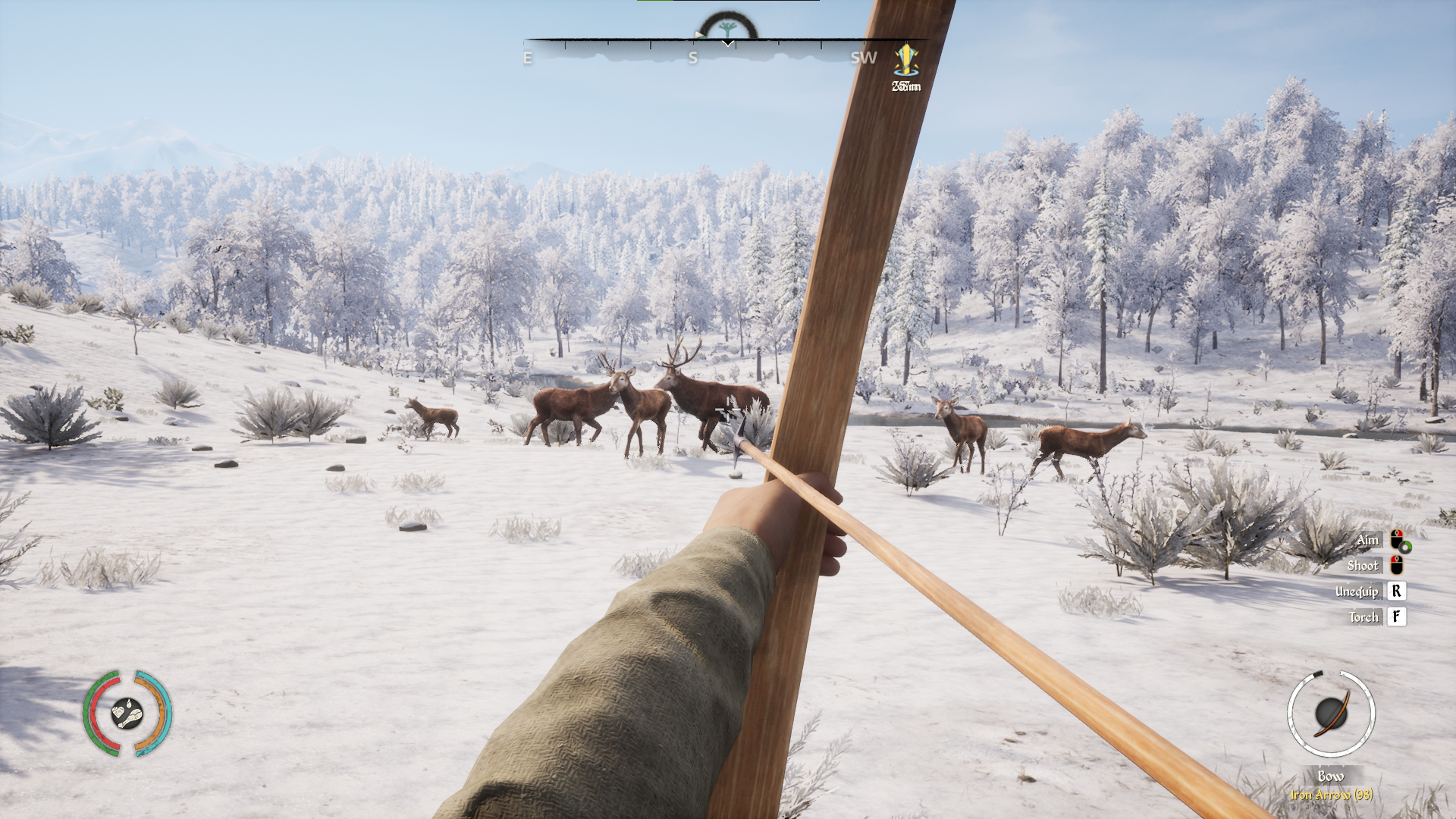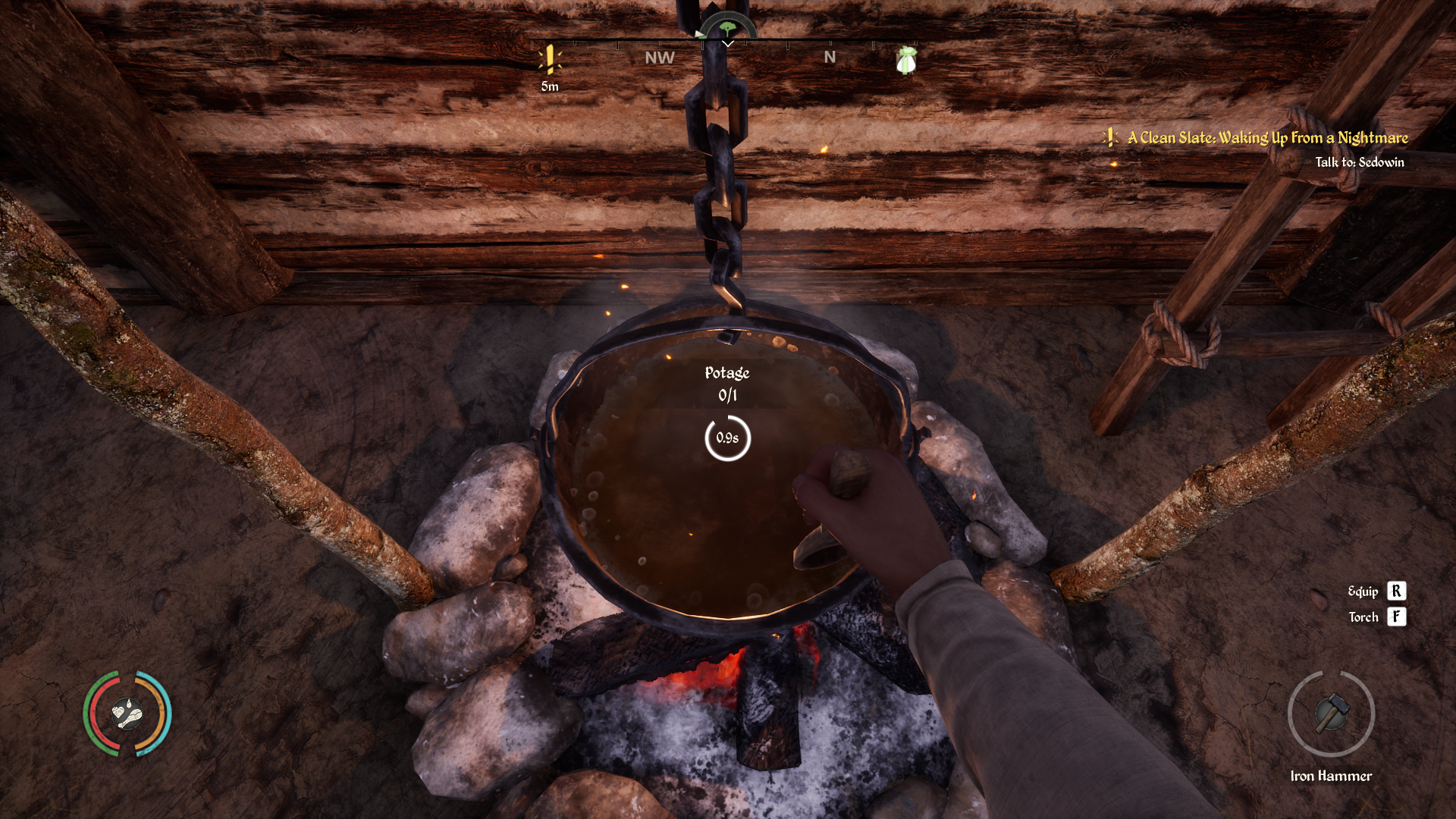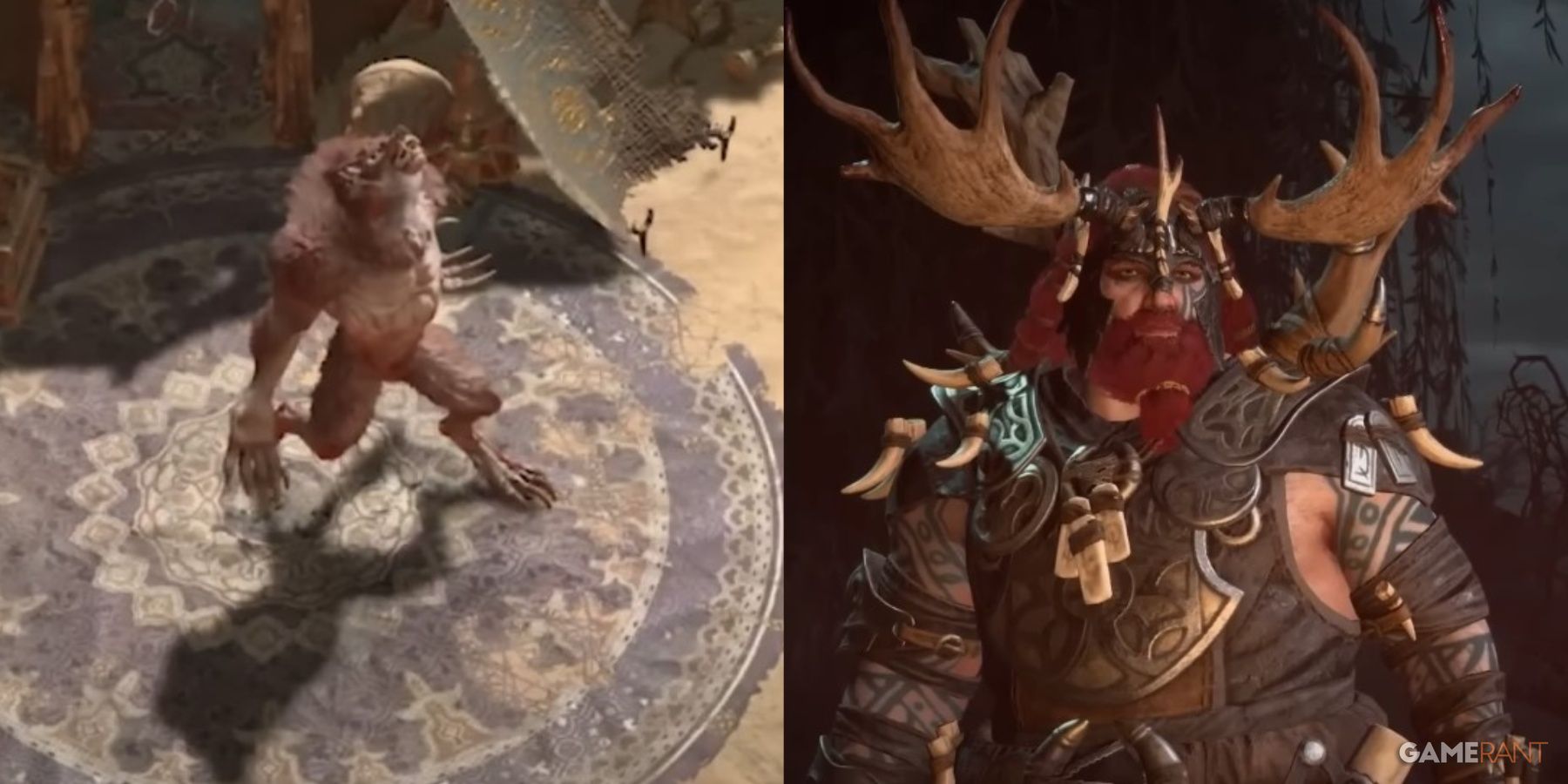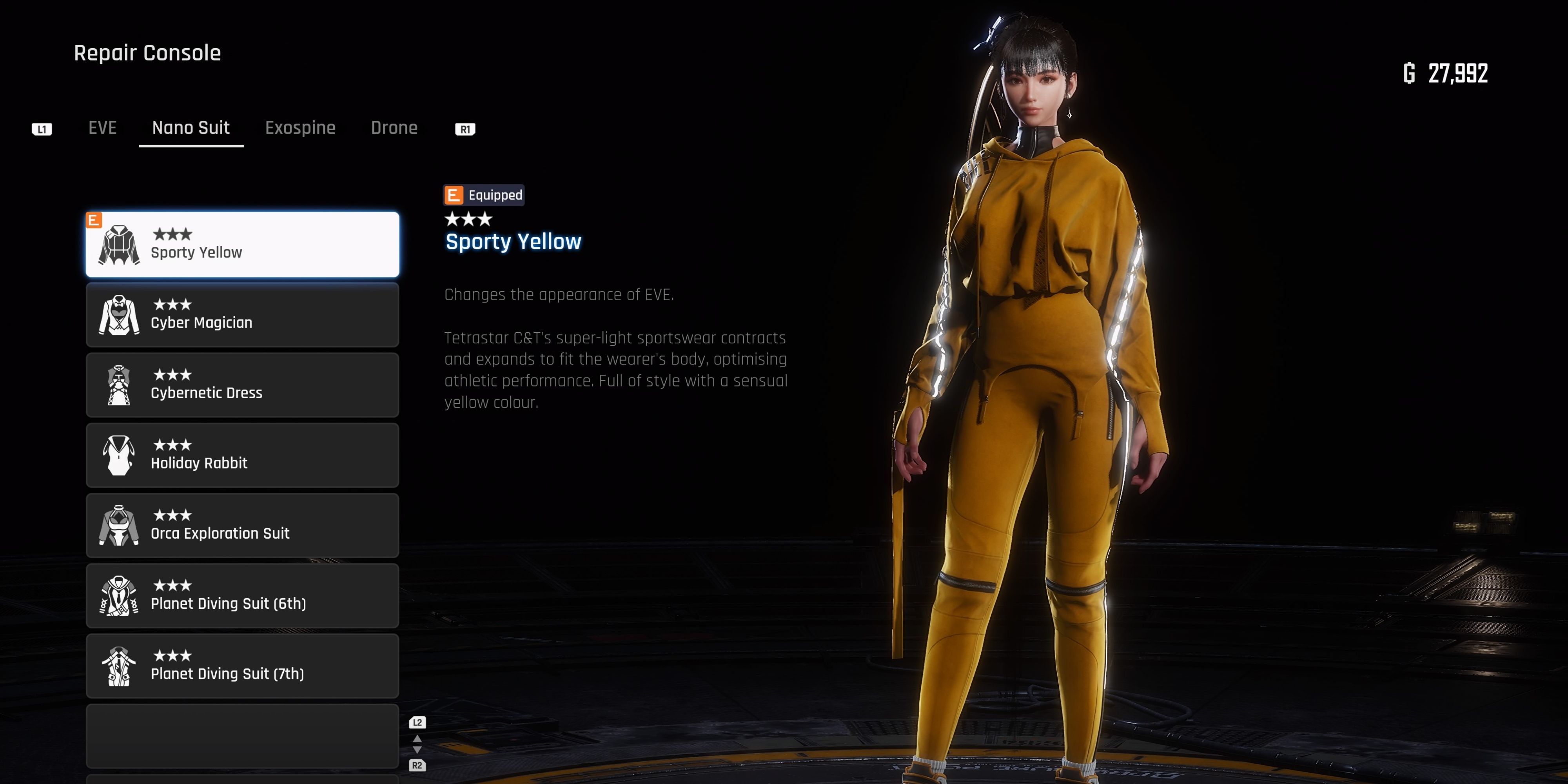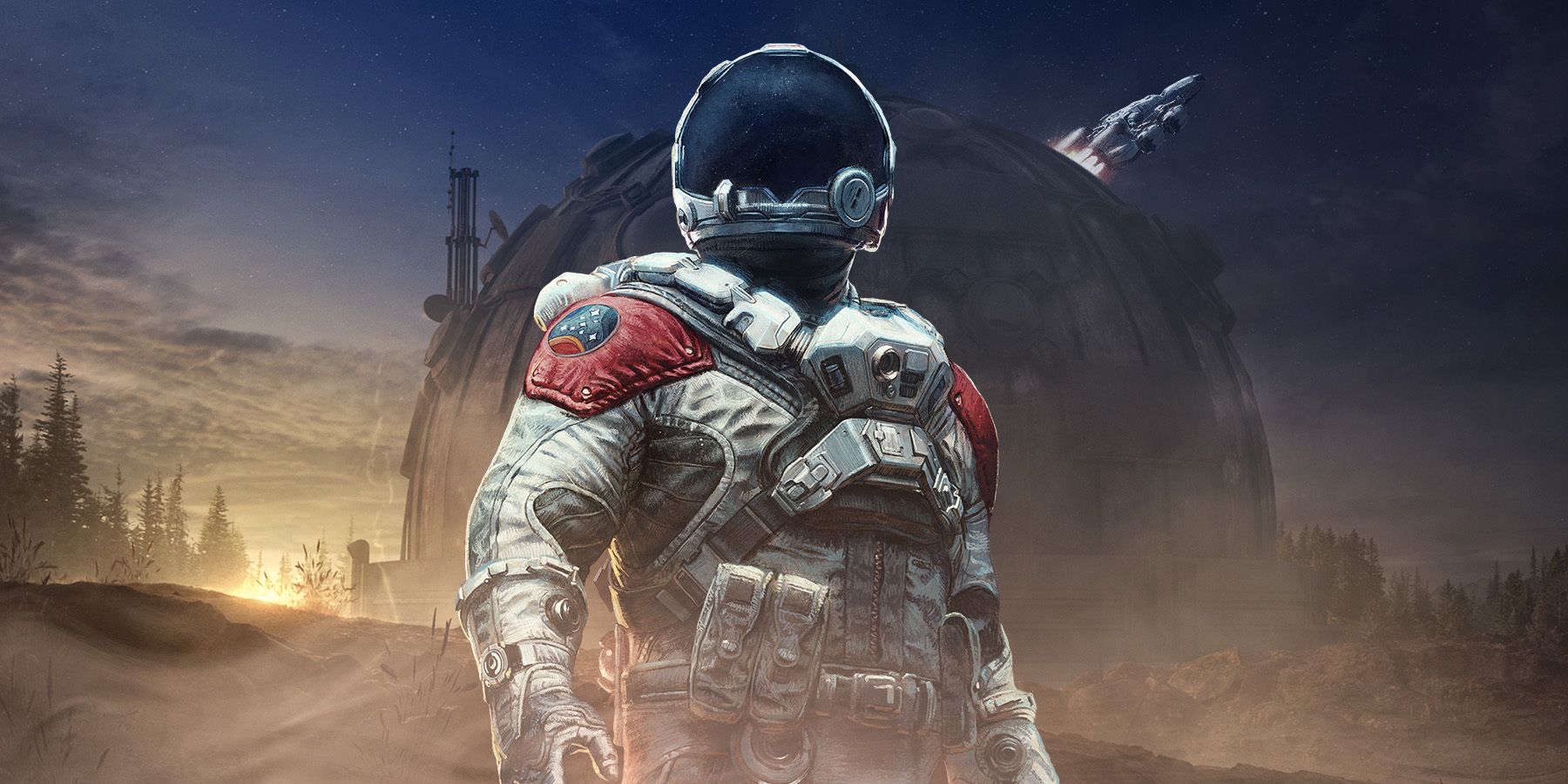Medieval Dynasty was an early access success when it debuted back in 2020 and has since steadily grown its fan base along with its list of features as the developers have continued supporting the game with meaningful updates. Perhaps most significantly, the game recently implemented a highly-requested co-op mode so players can work together in this cozy medieval life sim that melds survival gameplay with city-building mechanics.
In the wake of the new co-op update, Game Rant interviewed Render Cube’s 3D artist Marcin Warszawski and marketing manager Kamil Judasz about how Medieval Dynasty has evolved over the years, the challenges the team faced in the game’s early days, what they feel makes a great survival game, and lots more. The interview has been edited for brevity and clarity.
Medieval Dynasty: Best Starting Locations
In Render Cube’s Medieval Dynasty, most of the world is viable for base building, but a few locations are better than others.
Medieval Dynasty’s Biggest Updates and the Games That Inspired Its Developers
Q: Medieval Dynasty has received an impressive number of updates and support post-release. What do you feel have been some of the most impactful changes since the game’s debut?
Warszawski: Well, there are some obvious picks, like the console update that allowed us to expand our player base to more platforms than just PC. The recently published Co-Op (for now, still only on Steam) many players were waiting for helped our community grow as our players dragged their friends and family into the world of Medieval Dynasty. Maybe a bit less obvious thing would be the moment we added a third-person perspective, whose main goal was to eliminate the problem of people struggling with nausea due to head-bobbing.
But in my opinion, one of the seemingly small changes that proved to be pretty huge is the possibility to… grab items and move them around, which was added right after exiting the early access phase. We have many amazing players who love to decorate their villages, and this simple ability to arrange the village in your own specific way opened new possibilities for our players to express themselves and make the beautiful screenshots that amaze us up to this day.
Q: Were there any games that were particularly inspirational to you as you worked on Medieval Dynasty?
Warszawski: First, we looked at the Farmer’s Dynasty from our publisher and thought about how to remake this game to have similar premises, but do it in our own way. In terms of graphics and world immersion, we looked at Kingdom Come: Deliverance (awesome game, by the way, and kudos to our Czech neighbors), as it is the closest to what we wanted to achieve as there is a medieval setting with neither magic nor dragons, even though the time period is much ahead and from the perspective of a noble knight rather than a simple peasant. In the same manner, we looked at the Witcher series, because even though it’s more on the fantasy side, it’s Slavic and closer culturally to what we know.
When it comes to the city-builder aspect, we took some inspiration from Stronghold series, Knights and Merchants, Settlers and Anno. Survival was mostly inspired by games like The Forest and Green Hell. But as passionate gamers, we tried to recall what our favourite titles did right and what they did wrong, and from this special mixture, our unique Medieval Dynasty came out of our kettle.
Q: What are some challenges involved in developing a game like Medieval Dynasty that you feel players might not have thought about? Are there certain aspects of the game that are deceptively tricky to work on?
Warszawski: The thing that instantly comes to mind is the map itself. On one hand, we want to give our players as much open space for their villages and development as we can; on the other, this limits our quest design because we either take away from our players the possibility to build their village at the beautiful waterfall and spooky marshes, or the injured merchant might spawn just at their doorstep claiming that he hid in the bushes, or the outlaw who ought to be hidden in the forest might appear next to our carrot field. This can apply not only to quests but also to wild animal spawn points because if they don’t get deactivated, the next season a player could wake up next to a pack of wolves instead of a loving partner.
But this also diminishes the number of hunting places, and the real fun begins when you consider a case in which a player places dozens of buildings so far away from each other that they cover most of the map, and as a result, the animal population gets drastically lower. So it’s always necessary to find balance between giving a lot of freedom with nice-looking build spots and our control over the playthrough so that our players’ experience is not worse.
Q: What do you feel makes a ‘good’ survival/building game? Are there things you believe are key to making it an enjoyable experience?
Warszawski: In my opinion, there is no universal answer to this question, as it depends on what product you want to make and to what group of people it is directed at. Our game is casual friendly and has a soothing experience vibe. After all, in our game, there are game customization options, thanks to which you can not only turn off weight and environmental hazards or speed up the rate at which your character is getting experience points, but also make yourself completely immortal. Even though this solution is applicable to our game, it would, in my opinion, feel like cheating in more demanding survival games or those that are famous for their difficulty like the Dark Souls series.
But if we take into consideration our target group of players, then I think that there should be some dangers that motivate them to develop and improve, but not hard enough to make them feel that if they make one mistake, their whole work can fly out of the window. What is more, I believe that the most important aspect of our game is making your own cozy place. Whether it is just a small farm for your own family or a big living town with over a hundred buildings, a player must be able to stop for a moment, look at it, and think, “Yeah, I made it, and this is now my happy place.” This deepens the feeling of immersion in the game, and many players shared with us their stories about how their villages were their safe spaces where they could escape from some difficult moments they experienced in the real world.
Q: In the game’s early days, were there any features or mechanics you tried to implement but ultimately decided against including?
Warszawski: Before the early access, the start of our game was supposed to be completely different. Players were meant to begin already with a wife and a son, right in the winter, and most of the gameplay features were blocked behind a story-driven tutorial that needed to be completed if a player wanted to experience a fully open world. It had two major flaws. The first was that this approach would take away the sandbox and free will for a few hours of gameplay, which would definitely make replayability a much worse experience.
And the second was that there were around a dozen of us, so we didn’t have the work power to create a really polished, high-quality, and fun-to-play tutorial and a sandbox open-world game with multiple living villages that combines both survival and the city-builder aspects, that Medieval Dynasty turned out to be in the end. And this plot twist was due to our very first pre-early access gameplay video on IGN back in 2020, after which we got a lot of feedback from players in the comments. We realized then that, to make an awesome game, we must take a different path.
Co-Op, The Community, and the Historical Accuracy in Medieval Dynasty
Q: Medieval Dynasty recently implemented co-op. How do you feel the experience changes when playing with more people, and what challenges did you face adjusting the game to suit multiple players?
Judasz: Implementing co-op in Medieval Dynasty was a significant milestone for us, marking our first venture into creating a cooperative mode within our team. Adapting the game to accommodate multiple players required careful consideration to ensure a seamless experience. Challenges included synchronizing players, maintaining balance, and optimizing performance.
Playing in co-op transforms the experience into a dynamic adventure where players can strategize, divide tasks, and work together. Despite the challenges, co-op mode fosters teamwork and camaraderie, allowing players to share their gaming experience with friends and expedite progress through collaboration. Overall, co-op enhances the social aspect of gameplay, enriching the experience and providing new opportunities for cooperative play.
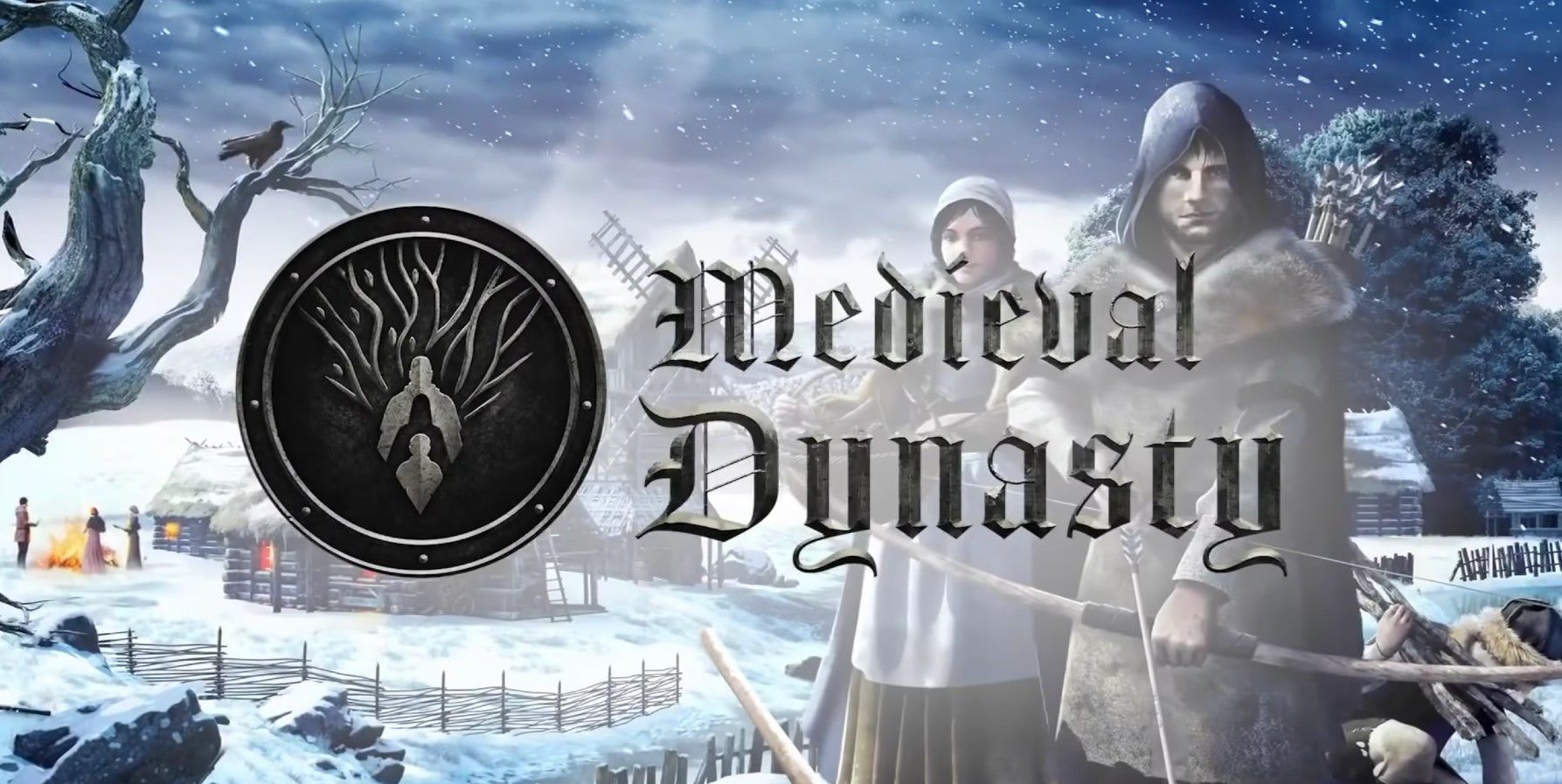
Medieval Dynasty: Tips On Finding Food For Villagers
Survival is hard in the middle ages, but if players can find food, their Medieval Dynasty can flourish.
Q: Now that the co-op update is out, can you talk a little about what’s next for Medieval Dynasty?
Judasz: With the co-op update released, we’re thrilled to discuss what lies ahead for Medieval Dynasty. Our focus remains on continually improving the game by addressing any existing issues and enhancing gameplay features based on player feedback. Additionally, we’re excited to announce that we’re gearing up to bring the co-op mode to console versions and other platforms. This expansion will allow even more players to experience the cooperative adventure of Medieval Dynasty. We’re committed to delivering an engaging and immersive experience for all players, and we can’t wait to share more details as we continue to evolve and grow the game.
Q: Medieval Dynasty has a sizable and passionate community, with tens of thousands in the Discord and hundreds of thousands in the Steam Hub. How does the community influence the studio’s development and approach to the game?
Judasz: The Medieval Dynasty community plays a pivotal role in influencing our development process and game approach. We prioritize engagement with our players, considering their feedback as fundamental to our expansion and quality improvement strategy. Beyond feedback collection, we offer dedicated channels for direct communication and bug reporting, fostering collaboration and a sense of ownership among players.
With tens of thousands on Discord and hundreds of thousands on the Steam Hub, our community continues to grow steadily. Their enthusiasm, ideas, and constructive criticism drive our commitment to delivering an exceptional gaming experience. Medieval Dynasty remains a game shaped by the collective efforts and passion of its community, ensuring ongoing evolution and enhancement.
Q: Speaking of the player base, what is it about Medieval Dynasty that you feel draws its players so strongly, especially in a genre with so much competition?
Judasz: Medieval Dynasty‘s success in a competitive genre lies in its unique fusion of survival and village-building elements. By catering to both genres, we’ve attracted a diverse player base seeking immersive experiences and strategic challenges. The game’s focus on village construction and community management offers players a sense of progression and ownership, tapping into the desire for immersive world-building experiences.
Furthermore, the recent addition of cooperative mode aligns with the industry’s trend towards multiplayer experiences, enhancing the social aspect of the game. This combination of unique gameplay elements and adaptability to industry trends has contributed to Medieval Dynasty‘s strong and dedicated player base.
Q: Sci-fi games have to grapple with approximating life in the future, while medieval games have to envision life in the past. What is your approach to depicting medieval life? How much emphasis is placed on historical accuracy?
Judasz: In depicting medieval life in Medieval Dynasty, our approach is grounded in a commitment to historical accuracy while also allowing for creative freedom. We strive to capture the essence of medieval society, emphasizing authenticity in various aspects of gameplay and world-building. While we’ve left a small gap regarding years within the medieval period, this flexibility enables us to draw from the wealth of knowledge and innovations of the time.
Preserving historical accuracy is paramount to us, as it enriches the player experience and fosters immersion in the medieval world. We aim to evoke the European medieval atmosphere authentically, ensuring that players feel transported to that era as they embark on their adventure. By carefully balancing historical accuracy with gameplay mechanics and narrative elements, we aim to offer players a compelling and immersive experience that respects the intricacies of medieval life.
[END]
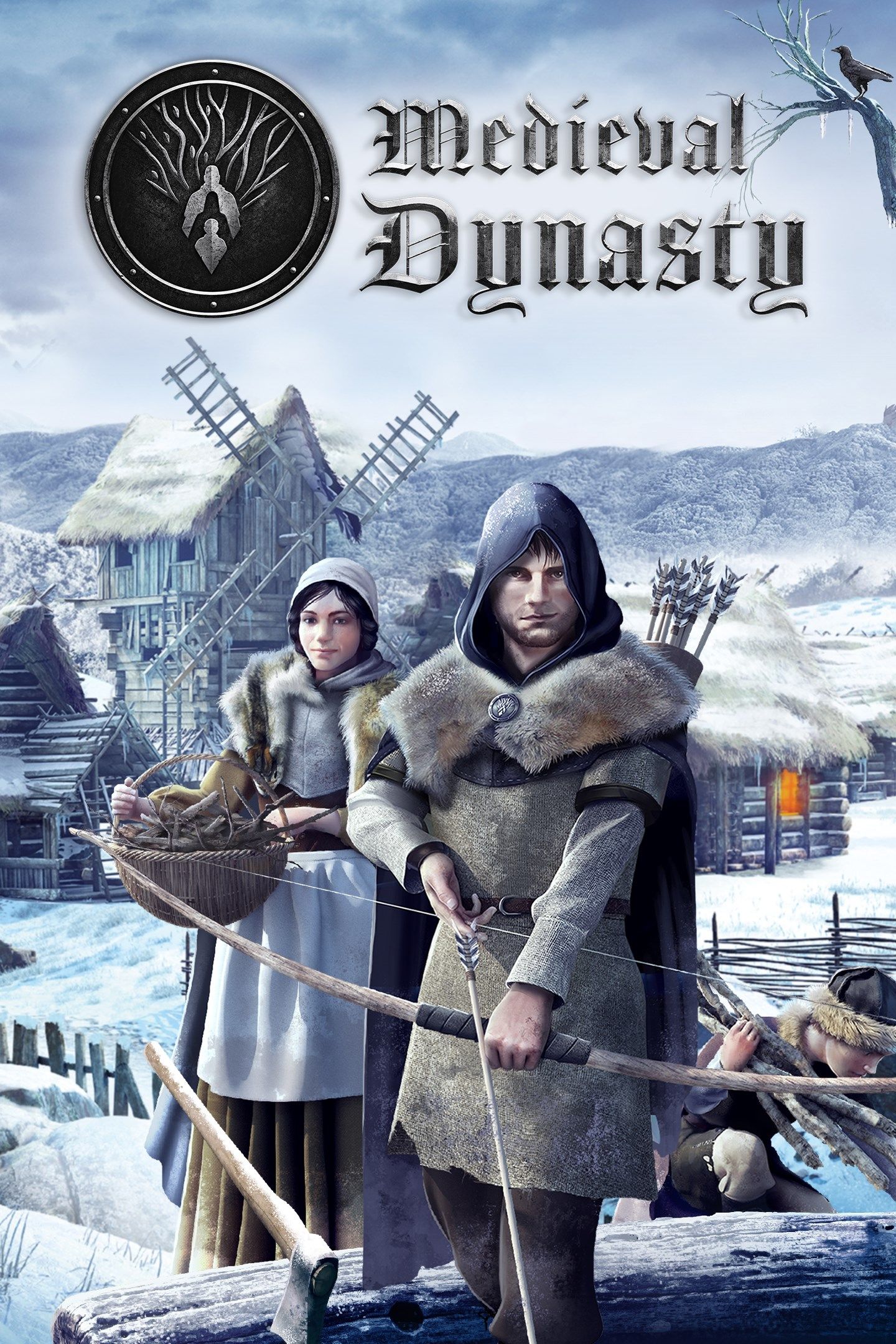
Medieval Dynasty
Render Cube’s Medieval Dynasty blends survival, crafting, building, and RPG elements to create a unique and immersive experience. Starting from nothing, players gradually establish and grow a town.


